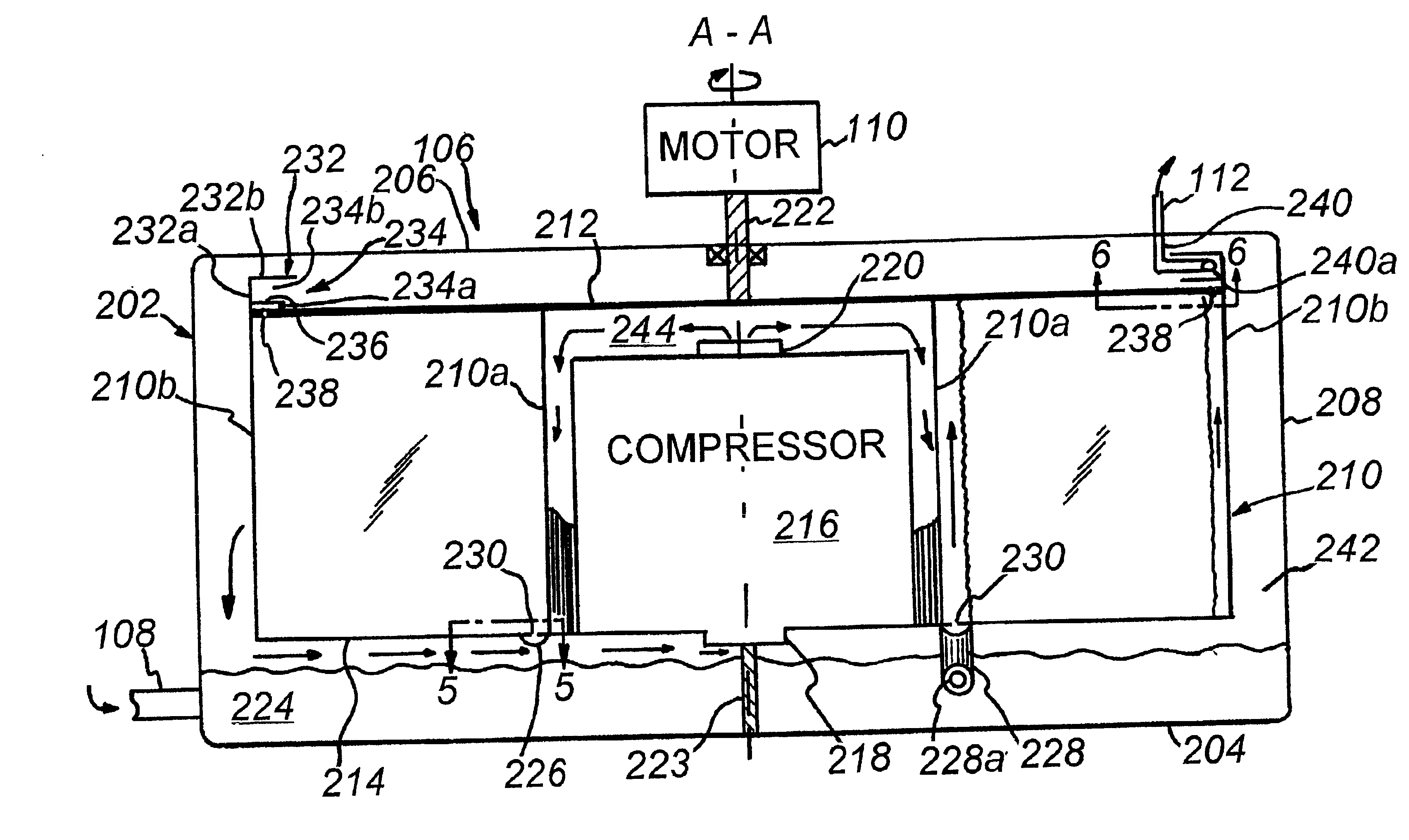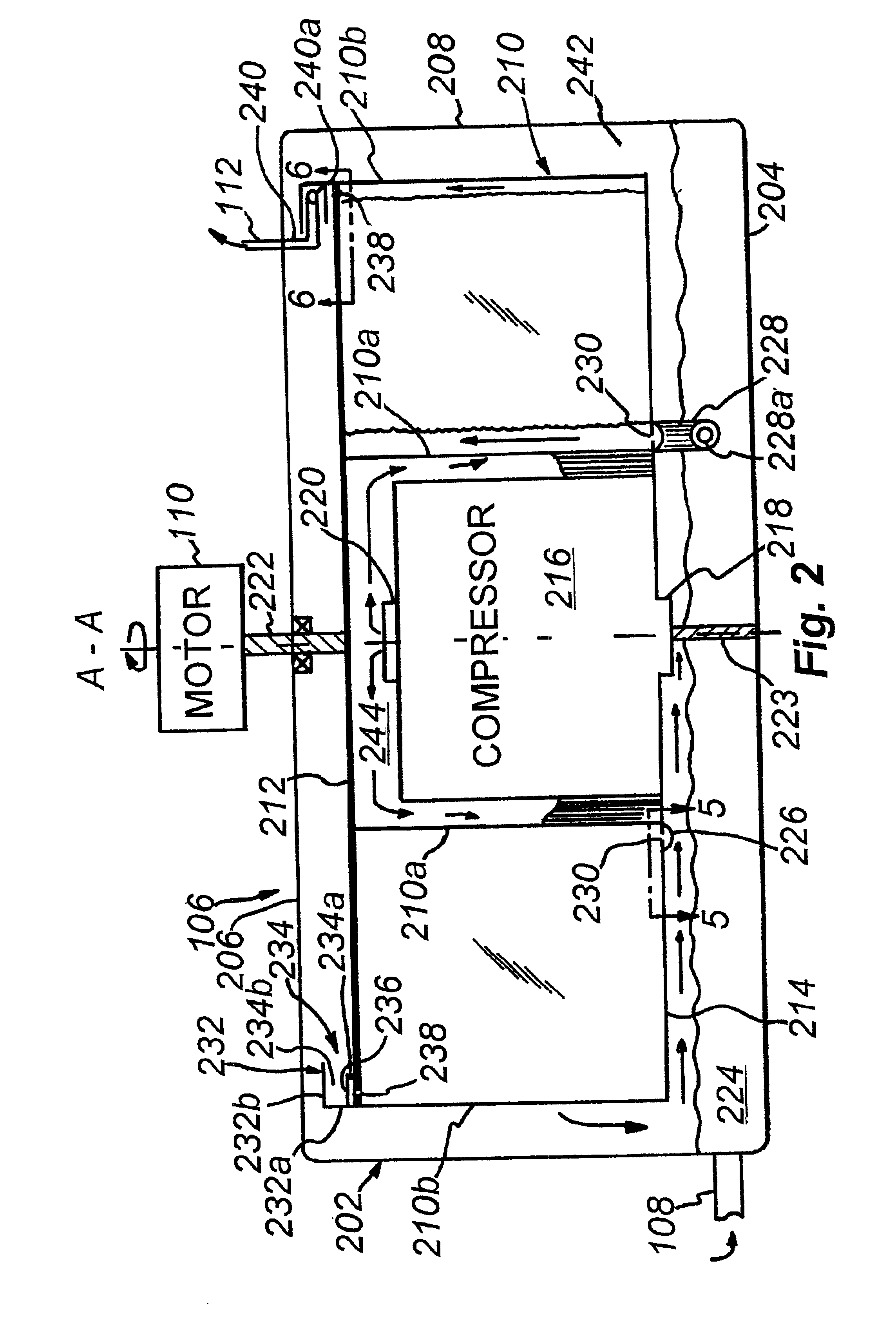Rotating fluid evaporator and condenser
a rotating fluid and condenser technology, applied in the field of distillation systems, can solve the problems of many hours, inefficient production of anything other than small amounts of distilled water, and inability to produce a few gallons of distilled water
- Summary
- Abstract
- Description
- Claims
- Application Information
AI Technical Summary
Problems solved by technology
Method used
Image
Examples
Embodiment Construction
. 1 is a schematic diagram of a vapor compression distillation system 100 in accordance with the present invention. Generally, the system 100 comprises a heat exchanger, such as counter-flow heat exchanger 102, for heating a supply of liquid to be distilled, such as non-potable water, which is received by heat exchanger 102 by first pipe 104. Heated liquid is transferred from the heat exchanger 102 to an evaporation and condensation unit 106 by a feed line 108. Coupled to the evaporation and condensation unit 106 is a motor 110 for supplying rotary power thereto. An output line 112 transfers a condensate, such as distilled water, from the evaporation and condensation unit 106 back through the heat exchanger 102. The condensate is then stored in a holding tank 114. Condensate may be withdrawn from the holding tank 114 by a second pipe 116.
FIG. 2 is a highly schematic, cross-sectional view the evaporation and condensation unit 106 and motor 110 of FIG. 1. The unit 106 includes a housi...
PUM
| Property | Measurement | Unit |
|---|---|---|
| diameter | aaaaa | aaaaa |
| diameter | aaaaa | aaaaa |
| diameter | aaaaa | aaaaa |
Abstract
Description
Claims
Application Information
 Login to View More
Login to View More - R&D
- Intellectual Property
- Life Sciences
- Materials
- Tech Scout
- Unparalleled Data Quality
- Higher Quality Content
- 60% Fewer Hallucinations
Browse by: Latest US Patents, China's latest patents, Technical Efficacy Thesaurus, Application Domain, Technology Topic, Popular Technical Reports.
© 2025 PatSnap. All rights reserved.Legal|Privacy policy|Modern Slavery Act Transparency Statement|Sitemap|About US| Contact US: help@patsnap.com



